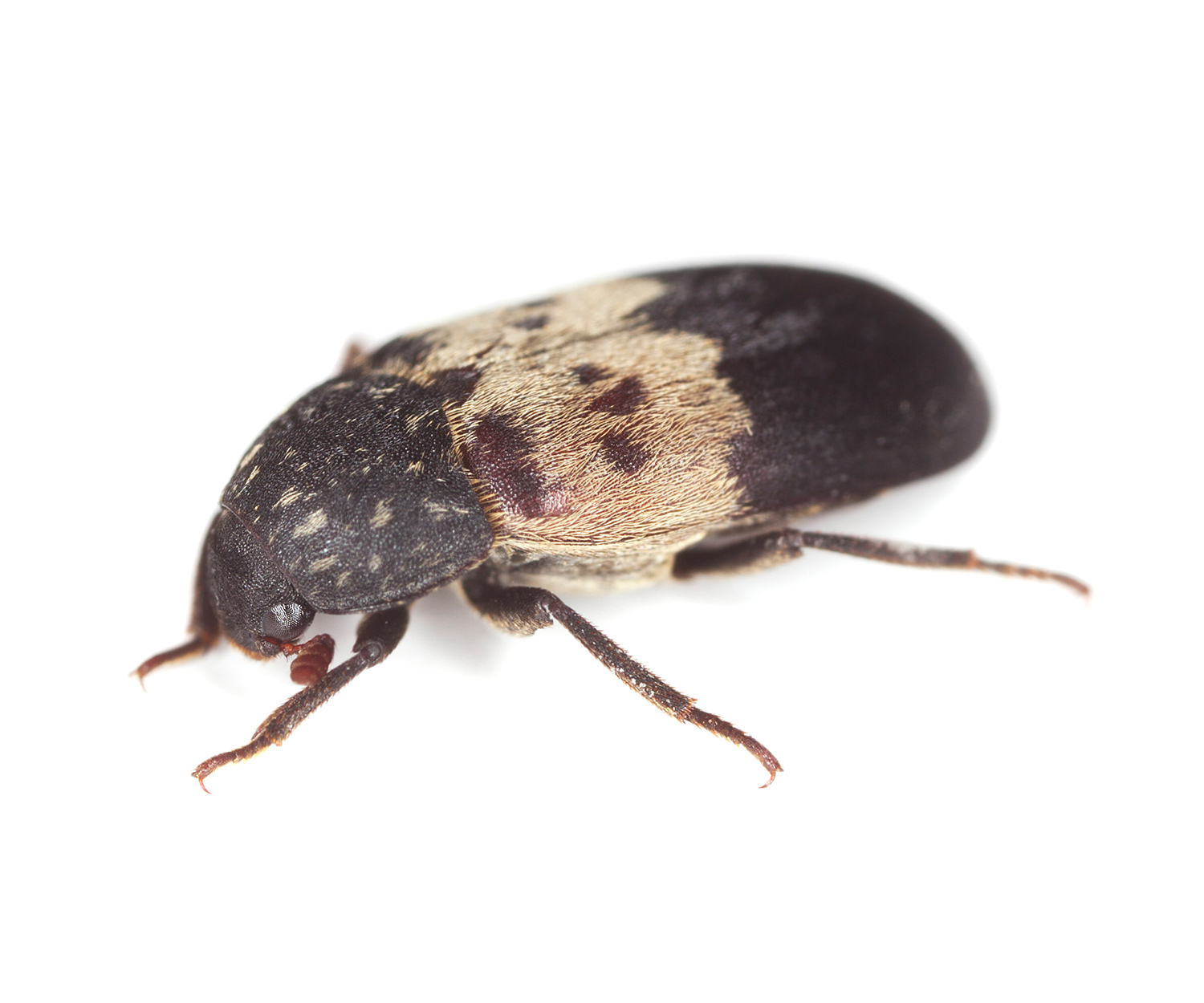Larder beetles are found in homes, museums, mills, and other places feeding on animal bi-products. While they prefer meat and cheese, they can be found anywhere they find suitable food sources. While refrigeration has lessened their damage, they continue to be a problem, especially because they feed on dead insects and can become a secondary infestation.
 Larder beetles are sometimes lumped into the pantry pest category, and while they are sometimes found in stored food products, it is more common to find these beetles in high protein food sources from animal products.
Larder beetles are sometimes lumped into the pantry pest category, and while they are sometimes found in stored food products, it is more common to find these beetles in high protein food sources from animal products.
Larder beetles can be controlled much like other pantry beetles: once you remove the food source, you can get rid of the majority of your infestation. Here are some steps to take when getting rid of larder beetles.
Can't find the product you are looking for? E-mail us and we'll get it for you!
We sell professional do it yourself pest control (diy), exterminator and
extermination insecticide, pesticide, chemical and bug killer treatment
products to spray, eliminate and exterminate pests.
Many of our products are not available in stores
such as Home Depot, Walmart or Lowes.